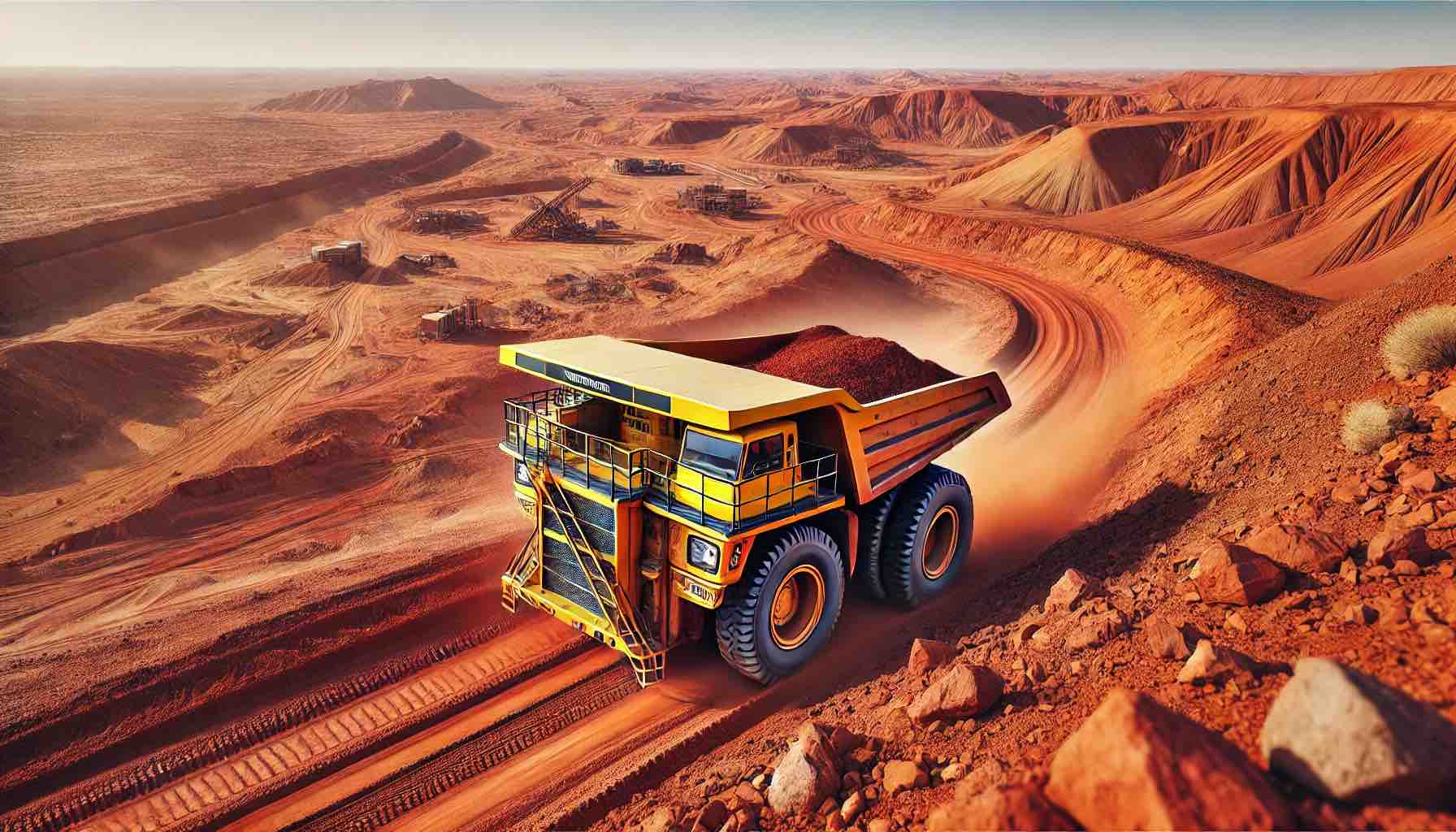

As the global economy continues to evolve, the mining industry is adapting rapidly, with a focus on sustainability, digital transformation, and new energy resources. Here are the top trends expected to shape the mining sector in 2025 across major global regions.
1. Sustainable Mining Practices
Sustainability is now at the forefront of the mining industry, with companies worldwide aiming to reduce their environmental impact. Mining operations are increasingly prioritizing renewable energy sources, minimizing water usage, and implementing better waste management practices. In the Middle East, Ma’aden in Saudi Arabia has invested significantly in sustainable mining methods to reduce carbon emissions and enhance environmental responsibility (Ma’aden).
In the UK and Europe, stricter environmental regulations drive innovation in sustainable mining. Companies like Anglo American are developing initiatives such as carbon-neutral mining operations, ensuring their practices align with the EU’s Green Deal targets for reducing emissions by 2050 (Anglo American). Meanwhile, Vale in Brazil is focused on reducing tailings dams and advancing dry processing technologies, contributing to safer and more sustainable mining operations (Vale).
India and China are also progressing in this area, with Vedanta Resources in India investing in green technologies and waste reduction strategies (Vedanta). Similarly, China Shenhua Energy is leading sustainable mining efforts in China by reducing coal dependency and exploring alternative energy sources.
2. Digital Transformation and Automation
Automation is transforming mining processes, making them safer and more efficient. Autonomous vehicles, automated drilling, and AI-powered monitoring systems are becoming common in mining operations, helping to reduce costs and improve productivity. In the UAE, Emirates Global Aluminium (EGA) has introduced automation in bauxite mining, using drones and autonomous vehicles for safer and faster operations (EGA).
Europe and the UK are leading in digitalization with companies like Rio Tinto implementing AI and IoT solutions to optimize resource extraction and reduce human involvement in hazardous areas (Rio Tinto). The company’s “Mine of the Future” initiative focuses on creating intelligent mines that rely on data and automation to operate efficiently.
India, Brazil, and China are also investing in automation to address labor costs and improve safety standards. NMDC Limited in India is incorporating digital solutions for real-time monitoring of mining activities, while Vale in Brazil is using autonomous trucks in its mining sites to enhance operational safety and reduce costs. In China, China Coal Technology & Engineering Group is implementing robotics and automated solutions to modernize the coal mining sector.
3. Decarbonization and Renewable Energy Integration
As part of global efforts to reduce greenhouse gas emissions, the mining industry is focusing on decarbonization. Companies are integrating renewable energy sources, such as solar and wind, into their mining operations. In the UAE, Masdar has been partnering with local mining firms to offer renewable energy solutions, helping reduce reliance on fossil fuels (Masdar).
European mining companies are leading in renewable energy integration, with Glencore investing in solar and wind power for its operations to reduce carbon emissions. This trend aligns with Europe’s ambitious climate goals and is expected to be a major focus at industry events across the region (Glencore). The UK’s Anglo American is similarly committed to renewable energy, especially in its African operations, which are powered primarily by solar energy.
In India, Coal India has committed to achieving net-zero emissions by 2070 by using solar power in its mines and reducing its dependency on coal for internal operations (Coal India). China is also rapidly adopting renewable energy, with China Shenhua developing solar and wind projects to power its operations and reduce its carbon footprint.
4. Focus on Critical Minerals and Rare Earth Elements
With the rise of electric vehicles (EVs) and renewable energy storage, the demand for critical minerals like lithium, cobalt, and nickel has surged. Dubai and the UAE are investing in the extraction and processing of these minerals, with a focus on lithium-ion batteries and clean energy storage solutions.
In Europe and the UK, companies like Glencore and Anglo American are expanding their operations to secure a steady supply of critical minerals, essential for EV production and battery technology. The European Union has classified these minerals as strategic, and the region is focused on securing its own resources and reducing reliance on imports (Glencore).
India and Brazil are emerging players in the rare earth element space, with Hindustan Zinc in India and Vale in Brazil exploring local reserves. In China, China Northern Rare Earth Group dominates the production of rare earth elements, making China a global leader in the supply of materials vital to high-tech industries.
5. Water Management and Conservation
Water is essential for mining operations, but its availability is limited, particularly in arid regions like the Middle East. Companies are implementing water recycling and conservation practices to reduce usage and improve sustainability. In the UAE, Emirates Global Aluminium has developed water-saving technologies to reduce the environmental impact of its bauxite operations.
The UK and Europe are also prioritizing water management, with Rio Tinto implementing closed-loop water systems to recycle wastewater in its European operations. This approach not only conserves water but also reduces environmental risks associated with waste discharge (Rio Tinto).
In India and China, where water scarcity is also an issue, mining companies are adopting water-efficient practices. NMDC Limited in India is utilizing advanced water recycling systems, while China Shenhua Energy is focusing on wastewater treatment and recycling to support sustainable water use.
6. Community Engagement and Social Responsibility
The mining industry has seen a shift toward social responsibility, with companies working to improve their relationships with local communities. This includes initiatives in health, education, and employment, which are critical in regions where mining is a significant part of the economy. In the UAE, Ma’aden has implemented community development programs to support local populations and enhance their quality of life.
In Europe, Anglo American is known for its social responsibility efforts, particularly in its operations across South Africa. The company invests in education and health initiatives, focusing on sustainable development that benefits communities near its mining sites (Anglo American). In the UK, Rio Tinto similarly invests in community engagement, emphasizing transparency and sustainability.
India, Brazil, and China are also focusing on social responsibility. In Brazil, Vale has established programs to support the socio-economic development of communities affected by mining. NMDC Limited in India is similarly committed to community welfare, offering health and education services in mining regions. China’s China National Coal Group invests in initiatives that support local communities and environmental sustainability.
7. Supply Chain Transparency and Traceability
As demand for responsibly sourced minerals grows, mining companies are focusing on supply chain transparency. Blockchain technology is being adopted to track minerals from extraction to end-use, ensuring ethical sourcing. In Dubai, DMCC (Dubai Multi Commodities Centre) is working with mining companies to implement traceability solutions in the gold and diamond sectors (DMCC).
In Europe, Glencore has been using blockchain to enhance transparency across its supply chain. This technology allows stakeholders to verify the origin and journey of minerals, which is becoming increasingly important in the tech and automotive sectors. The UK’s Anglo American is another leader in this area, focusing on blockchain and traceability solutions for responsible sourcing (Anglo American).
India and China are also embracing supply chain transparency. Vedanta Resources in India has launched initiatives to trace its mineral sources, and China Molybdenum in China is using blockchain to enhance supply chain transparency, especially for minerals like cobalt that are essential in electronics manufacturing.
References
- Ma’aden Official Website
- Anglo American Official Website
- Vale Official Website
- EGA Official Website
- Rio Tinto Official Website
- Glencore Official Website
- Coal India Official Website
- China Shenhua Energy Official Website
- DMCC Official Website
- Vedanta Resources Official Website
This article covers the key trends expected to influence the mining industry in 2025, including sustainability, digital transformation, and community engagement. These developments reflect the industry’s evolving role in the global economy and its commitment to meeting environmental, social, and governance (ESG) standards across different regions.



























